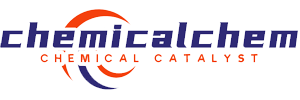
structural formula
| business number | 02mk |
|---|---|
| molecular formula | c11h26n2 |
| molecular weight | 186.34 |
| label |
3-(dibutylamino)propylamine, 3-(dibutylamino)propylamine |
numbering system
cas number:102-83-0
mdl number:mfcd00008219
einecs number:203-059-2
rtecs number:tx7175000
brn number:635829
pubchem number:24893885
physical property data
1. properties: colorless liquid.
2. density (g/ml, 25℃): 0.827
3. relative vapor density (g/ml, air=1): undetermined
4. melting point (ºc): – 50
5. boiling point (ºc, normal pressure): 205
6. boiling point (ºc, mmhg): undetermined
7. refractive index: 1.4463
8. flash point (ºc): undetermined
9. specific rotation (º): undetermined
10. autoignition point or ignition temperature (ºc): not determined
11. vapor pressure (mmhg, 20ºc): not determined
12. saturated vapor pressure (kpa, 55ºc ): undetermined
13. heat of combustion (kj/mol): undetermined
14. critical temperature (ºc): undetermined
15. critical pressure (kpa): undetermined
16. log value of oil-water (octanol/water) distribution coefficient: undetermined
17. explosion upper limit (%, v/v): undetermined
18. lower explosion limit (%, v/v): undetermined
19. solubility: undetermined
toxicological data
1. skin/eye irritation: start irritation test: rabbit skin contact, 100μg/24h; 2. acute toxicity: rat oral ld50: 820mg/kg; rabbit skin contact ld50: 270μl/kg;
ecological data
none yet
molecular structure data
1. molar refractive index: 60.26
2. molar volume (cm3/mol): 221.0
3. isotonic specific volume (90.2k ): 524.5
4. surface tension (dyne/cm): 31.7
5. dielectric constant:
6. dipole moment (10-24cm3):
7. polarizability: 23.89
compute chemical data
1. reference value for hydrophobic parameter calculation (xlogp): 2.2
2. number of hydrogen bond donors: 1
3. number of hydrogen bond acceptors: 2
4. number of rotatable chemical bonds: 9
5. number of tautomers: none
6. topological molecule polar surface area 29.3
7. number of heavy atoms: 13
8. surface charge: 0
9. complexity: 86.1
10. number of isotope atoms: 0
11. determine the number of atomic stereocenters�:0
12. uncertain number of stereocenters of atoms: 0
13. determined number of stereocenters of chemical bonds: 0
14. uncertain chemical bonds number of stereocenters: 0
15. number of covalent bond units: 1
properties and stability
none yet
storage method
none yet
synthesis method
dry n-(3-bromopropyl)phthalimide reacts with dibutylamine at 140-150℃ for 10h to generate n-(3-dibutylaminopropyl)phthalimide imine. then react with hydrochloric acid to obtain 3-(dibutylamino)propylamine hydrochloride, which is neutralized with a base to obtain 3-(di-n-butylamino)propylamine, with a yield of 77%-80%.
purpose
organic synthesis intermediates.

 微信扫一扫打赏
微信扫一扫打赏

